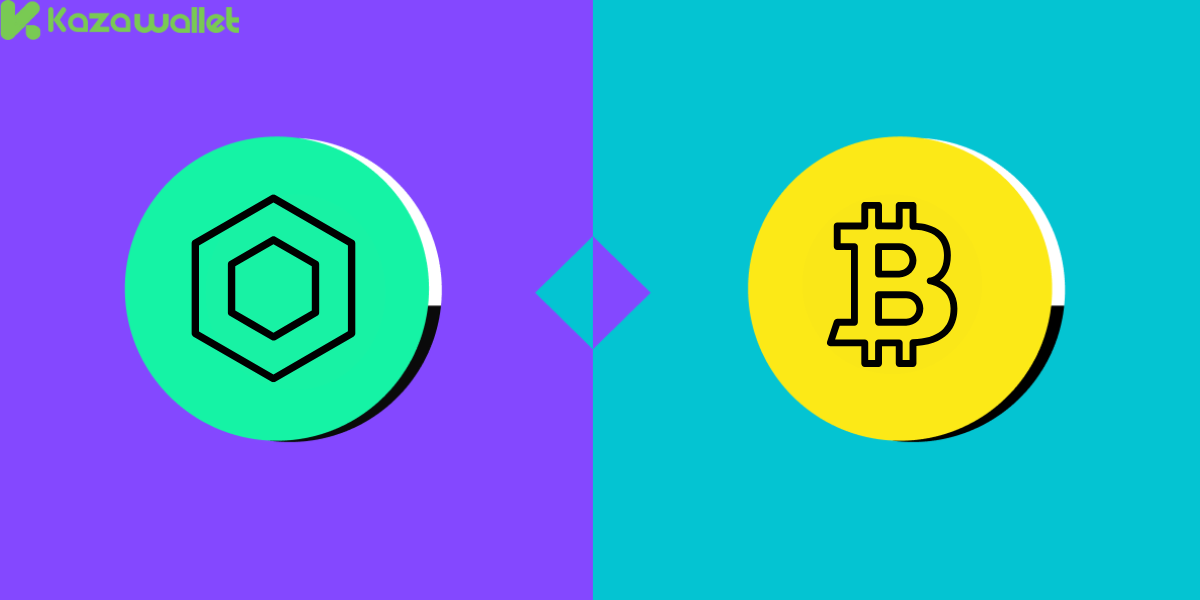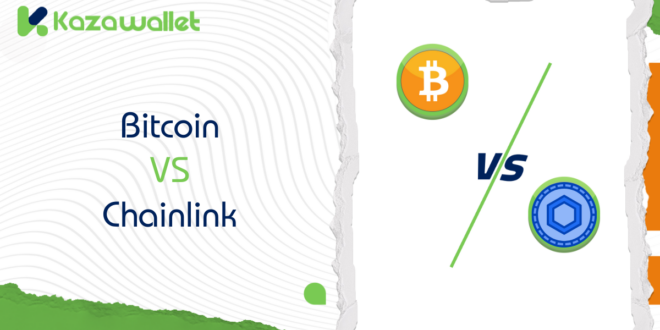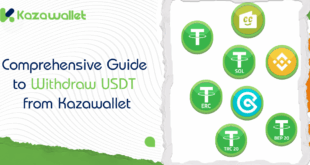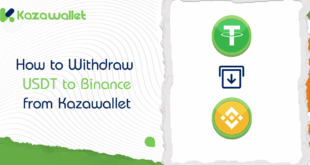Whenever we hear of cryptocurrencies, Bitcoin is generally what comes to mind—the currency that is at the forefront of the decentralized finance revolution. There are other players in this arena, however, such as Chainlink.
While Bitcoin was the first revolutionary move in a decentralized digital currency system, Chainlink is a pioneering technical solution that bridges smart contracts with the real world.
But can we compare them to one another? Or are they two very different instruments with different aims? In this article, we will examine Bitcoin vs Chainlink, the differences between Bitcoin and Chainlink, how those two currencies differ, and why each is especially valuable.
What is Bitcoin?

The world’s first decentralized digital currency, Bitcoin, was created in 2009 by a group or person who is still anonymous and is referred to as “Satoshi Nakamoto.”
Bitcoinutilizes blockchain technology—a secure digital ledger that keeps track of all transactions in a public and decentralized manner.
What is special about Bitcoin is that it is not just a payment system but a very popular digital investment as well. It has become a sort of “digital gold” with people viewing it more as a store of value rather than a medium for day-to-day transactions.
But Bitcoin also has several serious drawbacks, such as slow transaction processing and high transfer fees, that have led some to consider alternative options.
What is Chainlink?

Chainlink (LINK) is a cryptocurrency that was launched in 2017 with a mission to address a key challenge in blockchain technology: connecting smart contracts to external information.
Smart contracts are blockchain programs that execute a pre-set action after pre-set conditions have been met.
The challenge here is that such contracts must depend on information that is available outside of it (e.g., currency prices, results of sporting events, weather), but the blockchain cannot access information outside it.
This is where Chainlink comes in. The platform acts as a mediator between smart contracts and the outside world using a technology called Oracle.
Chainlink’s currency, LINK, is used as a payment system in the network to incentivize data providers and validators who assist in running the network.
USDT vs Chainlink: A Comparison of Risks and Stability
Bitcoin vs Chainlink: The Difference Between Bitcoin and Chainlink

The following is the distinction between Bitcoin and Chainlik:
Primary Purpose
While Bitcoin is considered a “store of value” and serves as a long-term investment, Chainlink was specifically designed to enhance the functionality of smart contracts.
Bitcoin aims to be an investment tool and a hedge against inflation, while Chainlink focuses on providing the technical infrastructure to support decentralized applications.
Stability
Bitcoin enjoys a higher level of stability compared to Chainlink. This is because Bitcoin has a longer and more established history, making it a safer choice for institutional investors.
On the other hand, Chainlink is more volatile due to its reliance on fluctuating demand for smart contracts and decentralized applications.
Technology
The technological difference between Bitcoin and Chainlink lies in their use cases. Bitcoin relies on blockchain as a means of recording transactions, while Chainlink uses blockchain as part of a larger system that connects smart contracts with external data. This makes Chainlink more versatile in terms of functionality but less well-known than Bitcoin.
Usage
Bitcoin is primarily used as an investment tool or a hedge against inflation. On the other hand, Chainlink is mainly used in decentralized applications and smart contracts, offering technical solutions to connect external data with the blockchain.
Supply
One of the differences between Bitcoin and Chainlink is supply. Bitcoin has a maximum limit of 21 million units, making it scarce and giving it high investment value.
Chainlink, however, does not have a strict cap on the number of coins issued, making it less scarce and less valuable from an investment perspective.
Decentralization
Although both currencies rely on the principle of decentralization, Bitcoin is considered more decentralized due to its vast and distributed network.
Chainlink, on the other hand, relies on a specific number of nodes (Nodes) to achieve its goals, making it less decentralized compared to Bitcoin.
Acceptance and Adoption
Bitcoin is the most widely accepted digital currency, recognized by many major companies and even some countries.
Chainlink, however, still faces challenges in achieving the same level of acceptance and adoption, with its use largely limited to specialized technical applications.
Bitcoin vs Chainlink: Risks Involved

Despite the differences between Bitcoin and Chainlink and the advantages offered by both cryptocurrencies, several risks must be considered:
Risks Associated with Bitcoin:
- Price Volatility: Bitcoin experiences significant changes in value over short periods, making it a high-risk and unstable investment.
- Fraud Risks: The Bitcoin market is not immune to scams or fake platforms, which can lead to substantial losses for unwary investors.
- Security Issues: Bitcoin is vulnerable to hacking and theft, especially if digital wallets are not properly secured. Losing your private key can result in a permanent loss of funds.
- Regulatory Environment: Changes in laws or government bans can significantly impact Bitcoin’s value and acceptance as a payment method or investment.
- Technical Flaws: Although blockchain technology is generally secure, it is not free from vulnerabilities that could be exploited to threaten the network and funds.
- Impact of Global Events: Bitcoin is sensitive to economic crises and media statements, leading to sharp fluctuations in value compared to traditional assets.
Risks Associated with Chainlink:
- High Price Volatility: Chainlink’s price changes rapidly, offering opportunities for both significant profits and losses in a short time.
- Influence of “Whales” on the Market: Large investors can directly affect the currency’s price when buying or selling large quantities, causing market disruptions.
- Security Risks Related to Cross-Chain Bridges: The technology linking blockchains is not fully secure and has been previously hacked, resulting in substantial losses.
- Regulatory Uncertainty: Cryptocurrency regulations remain unclear and constantly evolving, potentially affecting how Chainlink operates and its value.
- Technical Challenges in Oracle Systems: Any technical error or hack in the decentralized Oracle system can lead to inaccurate data, putting smart contracts at risk.
At the End:
Ultimately, while Bitcoin remains at the center of cryptocurrencies, Chainlink has emerged as a key actor in decentralized applications.
Each has a unique function that addresses different needs in this ever-changing ecosystem.
Whether you’re looking to invest long-term or want to consider current technical capabilities, it is important to have a clear understanding of such currencies to make informed decisions.
For convenience in using digital currencies, Kazawallet offers a secure and hassle-free way to manage your digital assets with ease and without unnecessary hassle.
 Blog Kazawallet
Blog Kazawallet




